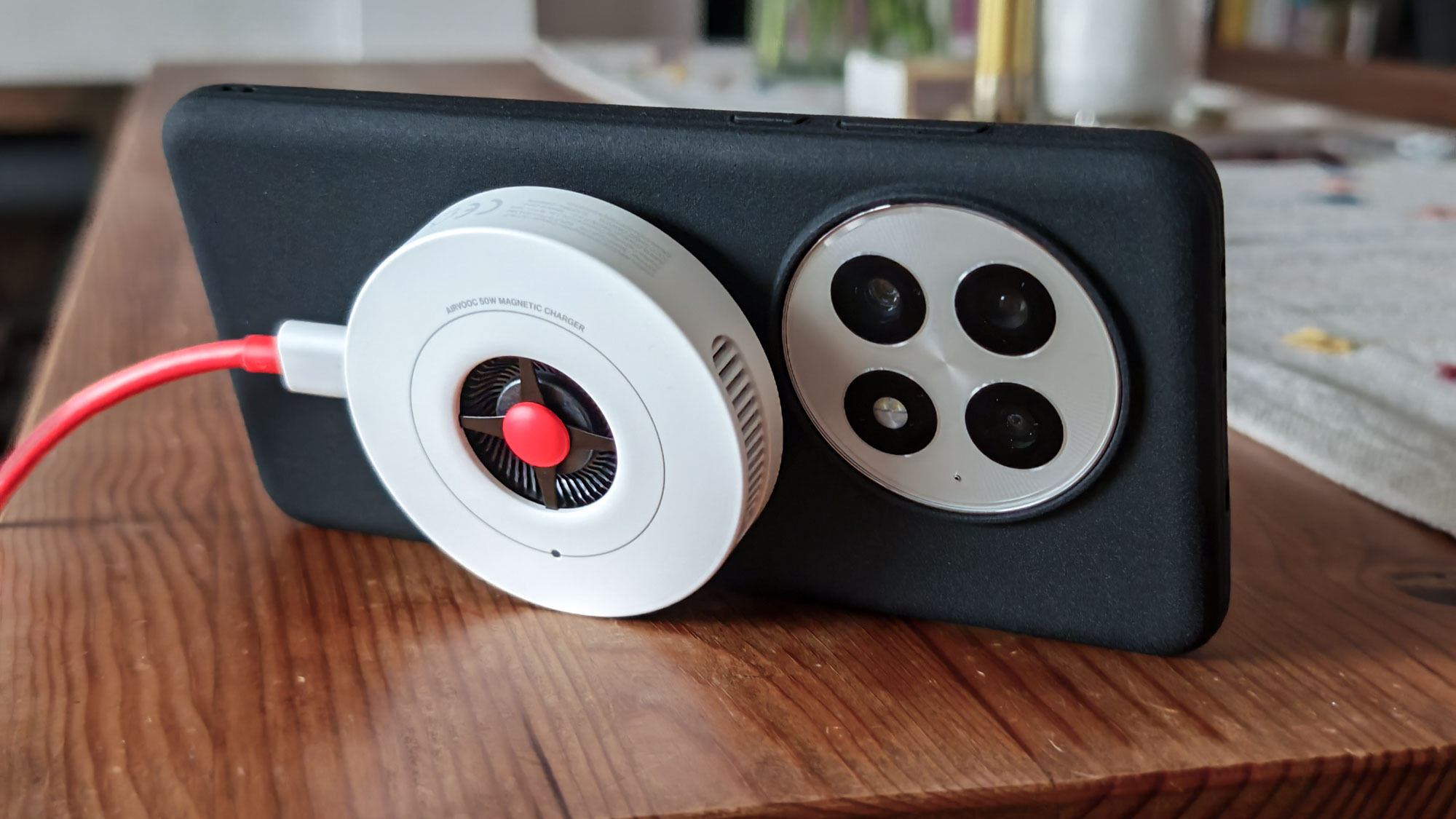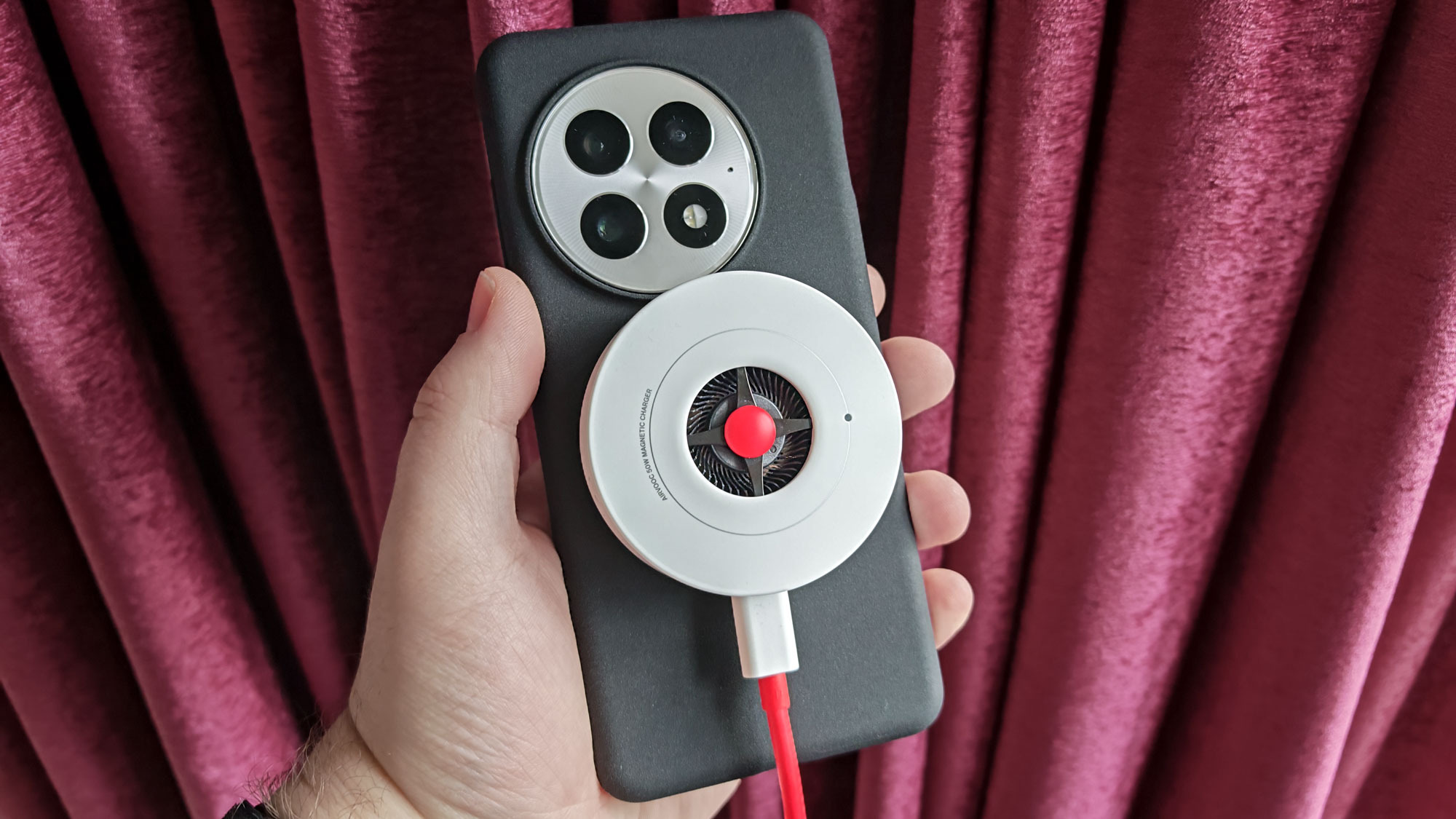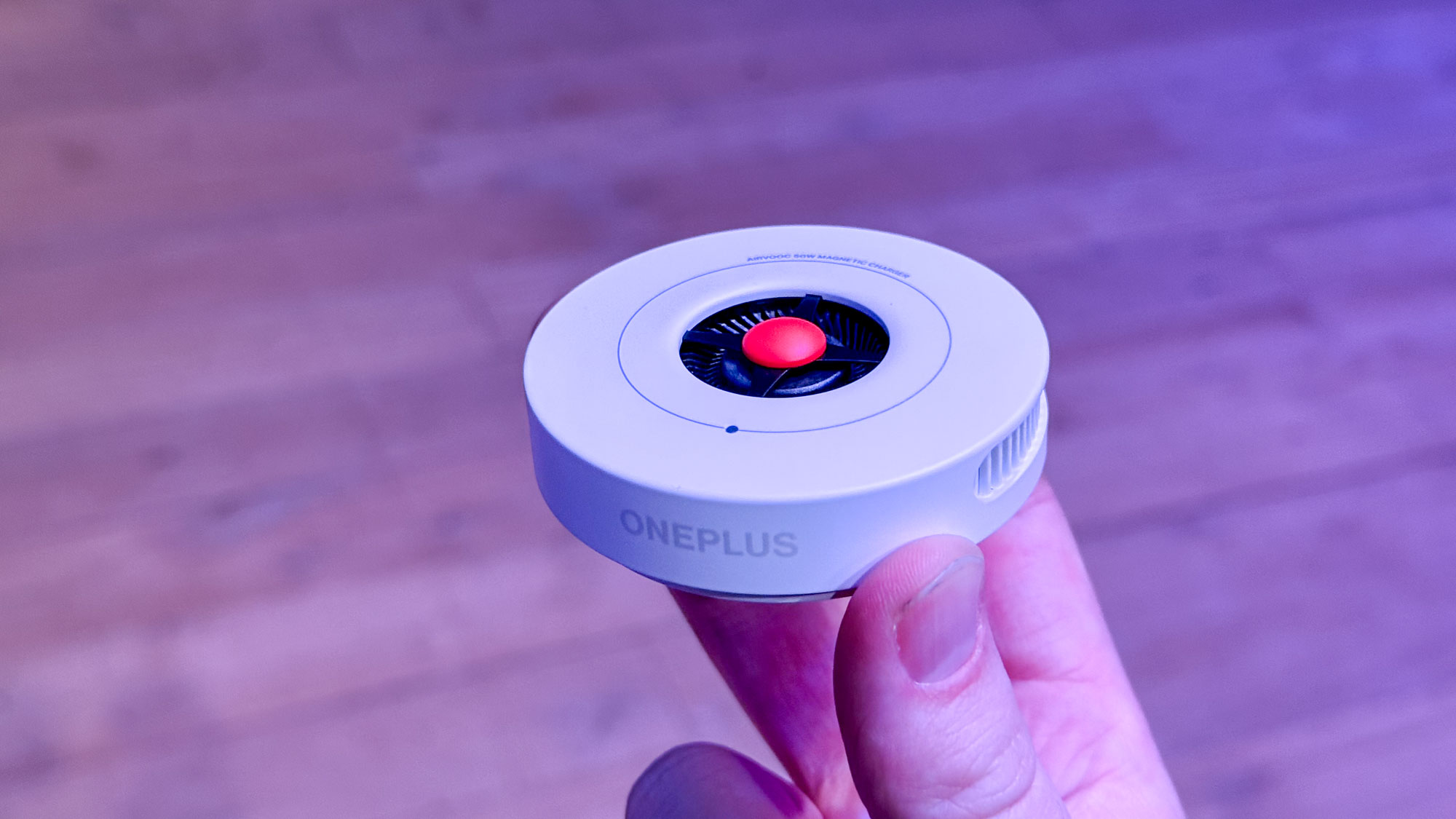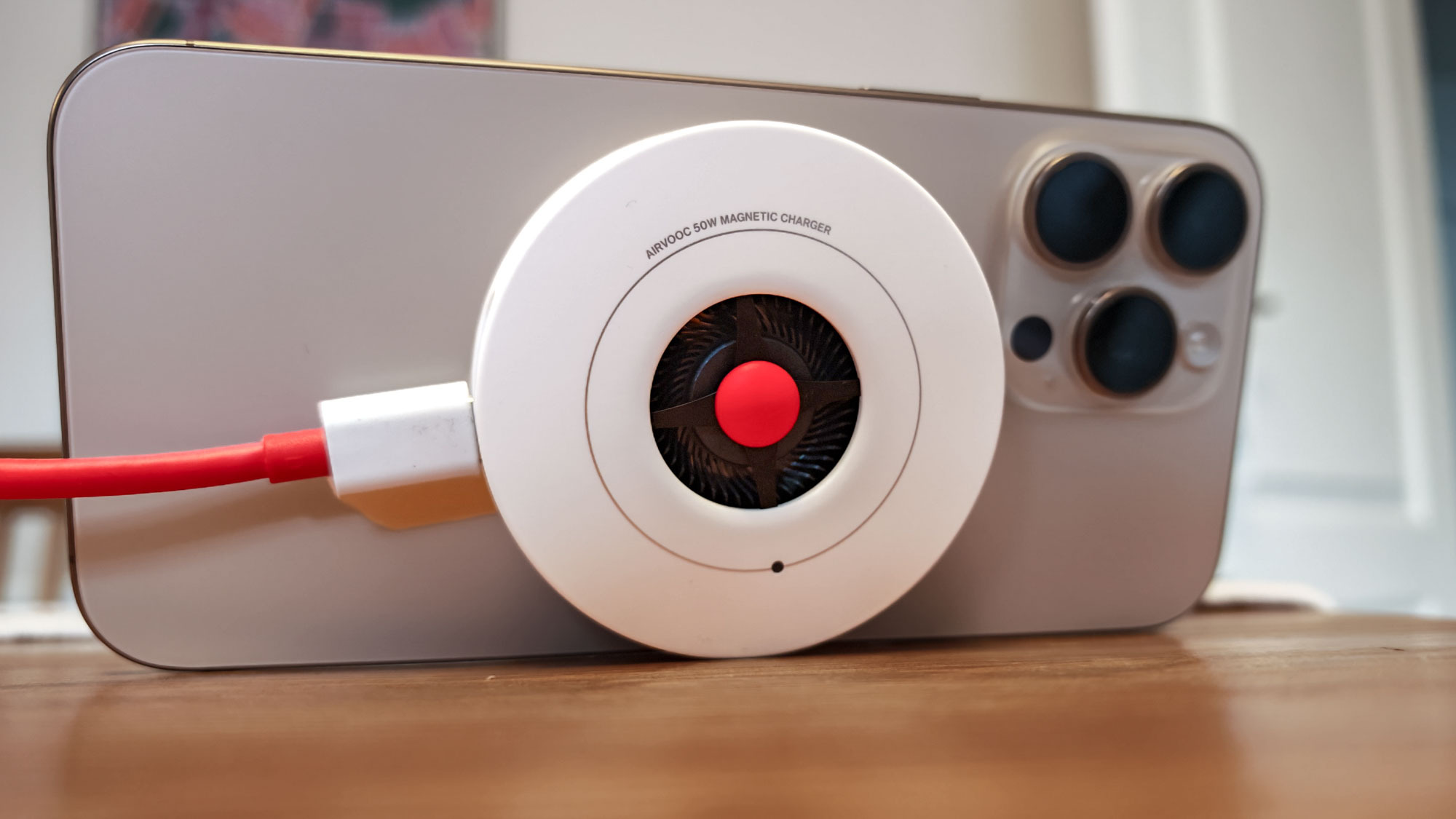
Smartphone accessories can sometimes be just as interesting as the phones they're designed to serve. The newly launched OnePlus 13 is a good example of this, for as good as the phone is (and it's really very good), the new AIRVOOC 50W Magnetic Charger launching alongside it could have an impact on phones beyond the brand it's designed for.
This new AIRVOOC charger is a new wireless charging puck, replacing the charging stand that OnePlus introduced with the OnePlus 8 Pro in 2020 that was recently discontinued. Taking the form of a round pad rather than a rectangular stand, the new charger's two main changes are its magnetic attachment method, and its larger, more prominent cooling system. The magnets mean it's super simple to attach to compatible phones, including iPhones with MagSafe, while the fan, vents and fins transfer the heat from the magnetic induction process away from the phone to keep the charging process stable and as fast as possible.

It does however cost $79/£69, which is quite a lot for a single wireless charger. And that's not even accounting for the potential cost of a compatible charger (OnePlus' cheapest charger has an 80W output and costs £50). And if you want to use it properly, you need to buy a magnetic case, as the phone doesn't have magnets within. And that's another $25 if you buy the cheapest option from OnePlus for the OnePlus 13.
That's quite a few hoops to jump through for the optimal wireless charging experience for your new OnePlus. And considering the recent news about Qi2 ready status being conferred on phones without built-in magnets, this could be an approach other Android phone makers start to adopt. So giving it a test was a must.
Trying it out
For my first test, I decided to try the charger's ideal set-up. So, I installed a OnePlus-made Sandstone Magnetic Case on my OnePlus 13 review unit, let the phone's battery drain to empty and then attached the Wireless Charger. I also opted to charge the phone propped up with the charger on its side, and plugged the cable into a voltage meter to read how much power it was using.
Despite being rated for 50W, the charger initially pulled 70W, before chilling out gradually to a stable 36W after 10 mins. As the phone filled up, the wattage dropped further to 28W, and then 13W by the time the phone was completely full.

And how long did that take? The 0 - 100% time was 70 minutes, with the charging percentage reaching 33% at the 15-minute mark, 56% at half an hour and 96% at an hour. While that's of course slower than a wired charge, it's actually five minutes ahead of the 75 minutes that OnePlus promises on the charger's store page.
Like I mentioned before, I had the phone positioned on its side, leaning on the charger, for this test as it seemed the optimal way to charge it. I never like putting phones face-down to avoid scratching the screen, and laying the phone on its back with the charger beneath it isn't ideal in this instance.
That's because the OnePlus charging puck doesn't sit flat, due to the rounded red dot that sits on top of the fan opening. This is likely necessary to stop you from accidentally blocking the air intake, as when I tried to charge the phone like this, the charger switched off after 28 minutes. The phone charged up 30% in that time without the case, showing that the benefit that using the magnet has beyond avoiding having the device rocking and spinning around like an oddly-shaped Weeble.
AIRVOOC with an iPhone
Despite being built especially for the latest OnePlus flagship, the new AIRVOOC charger is compatible with the widely-used Qi charging standard. So you can use it to charge a huge variety of recent smartphones, including iPhones.

I tried the OnePlus charger with my iPhone 16 Pro Max, again propping the phone up with the help of the puck and with my power meter providing measurements. Despite only drawing a peak of 17W, the charger's fan still spins up, but it's still not that fast to fill the phone. It managed to charge the phone up 50% after two hours, charging at about 8% every 15 minutes initially before slowing to 5-6% as the battery filled. But with the iPhone propped up and the necessary settings enabled, I was able to use Standby Mode.
Perhaps the biggest surprise was when the charging was done. The cooling fan had done such a good job, the whole phone was cold to the touch. This wasn't something I noticed with the OnePlus due to the case. Even though the charging speed wasn't that good, keeping the phone this cold was, as iPhones are notorious for heating up during charging. That could prove handy if you wanted to charge the iPhone wirelessly and want to use it at the same time, especially if you're using the phone for gaming or another processing-intensive activity.
Verdict
OnePlus' new charger is an expensive accessory for the OnePlus 13, but one that does deliver the speeds it promises when used properly. And can provide a small refuel to other phones and devices you have around, along with a free cooling-off.
That said, the particular implementation OnePlus has gone for is quite odd. Aside from the fact this is a charging pad not designed to hold a phone face-up, adding magnets that only come into play by adding another accessory means you have to pay extra to get the full experience. Good news for OnePlus, but not necessarily for the user who ends up feeling pressured into additional purchases.
I, like my colleague Tom Pritchard, want to see the open, magnetic Qi2 take off to make Android phones as capable as iPhones have been for the past five generations. It'll mean it's much easier to find compatible chargers for Android phones, and much easier to use any brand of charger with any brand of phone, rather than relying on proprietary tech. But while we wait for that day to come, anyone considering buying a OnePlus 13 should consider buying the AIRVOOC 50W Magnetic Charger, especially if you buy it directly from OnePlus as part of the discounted Wireless Charging Bundle. As an expensive but effective pairing, getting a discount makes it easier to enjoy the benefits.
More from Tom's Guide
- I put the OnePlus 13's cinematic video capabilities to the test — and the results are stunning
- Google Gemini’s new lock screen features make the AI even more useful — here’s what it can do
- I tried astrophotography on my OnePlus 13 to shoot nebulas, star clusters, and planets — these were my best captures







